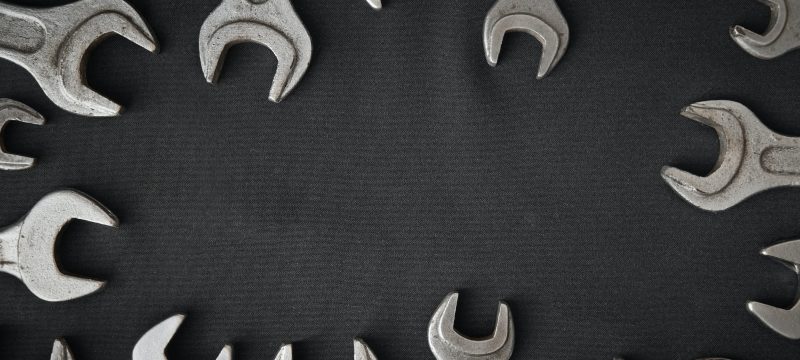Diagnose Problem with my car or truck in Raleigh
Your car is an important part of your life. It gets you where you need to go and it keeps you away from those annoying public buses. Without a properly maintained vehicle, though, all those advantages can disappear in an instant. That’s why it’s important to know how to diagnose problems with your car or truck when they arise so that you can make sure that everything stays in good working order for as long as possible.
Check the oil
The first thing you should do is check the oil. Make sure to check it before and after every trip, as well as during regular service intervals. By doing this, you can catch an issue with your car or truck before it becomes serious enough to cause damage or even break down on the road.
The color of your engine’s oil should be golden in color, which indicates that it’s at its proper level and has been running smoothly for some time. If there are signs that there isn’t enough lubrication in your engine (for example, if there are white flecks floating around), then it’ll probably need some servicing before long–and possibly even worse problems down the line!
You can use a dipstick attached to either side of your engine block (they’re usually labeled) to check how much oil has been used up by measuring how far down into its housing it goes when fully inserted; from here determine how much more needs adding
Check transmission fluid
You can check your transmission fluid level by checking the dipstick. If the level is below the “add” line, add more transmission fluid to bring it up to that mark or higher.
If you see any signs of leakage–fluid on the ground or undercarriage, a wet spot underneath your vehicle–it’s time to take action! If a leak isn’t fixed right away, it could cause serious damage to your transmission system and cost thousands in repairs down the road.
You should also pay attention for any burnt smells coming from under the hood when driving in stop-and-go traffic or climbing hills; this could indicate overheating issues with either an internal seal (which needs replacing) or external seals (which can be repaired).
See if the belts look right
The belts are made up of rubber, so they can wear out over time. You should check your vehicle’s belts regularly for signs of damage or wear. Look for:
- Cracks in the belt material that might indicate it’s time to replace it
- Worn spots on the surface of the belt, which could indicate that it needs to be replaced soon
- Belt tensioners (devices that tighten and loosen a spring-loaded pulley) that are cracked or broken–these parts hold your tensioner in place and allow them to move freely so they’re not stuck when you’re driving around town; if they break, then your car won’t run well because there will be uneven pressure on all four tires at once
Check the air filter
Check the air filter. The first step is to check whether or not your car’s air filter needs to be changed. If you don’t know how to do this yourself, take it into a mechanic for examination and replacement if necessary. If you’re worried about finding an affordable place to get your car fixed in Raleigh, check out Yelp reviews from people who’ve been there before; they’ll typically have some good recommendations for places that won’t break the bank but still do quality work!
If all else fails…
If none of these steps work and your car still isn’t running properly after checking everything above (including checking with friends), then take it back into town where someone else can give it another look at no charge!
Test the spark plugs
There are a few simple tests you can perform to determine whether your car is experiencing problems with its spark plugs. First, check the plugs by pulling them out of their holes and inspecting them for wear. If they’re worn down too far or look damaged in any way, replace them immediately–this may indicate that there’s something wrong with your engine that needs repair.
Next up: Check the wires connecting each plug to its distributor cap (the thingy near where you turn on the key). If these wires are loose or frayed in any way, this could mean trouble for both yourself and others on the road! It might be time to visit an auto shop near Raleigh NC soon so they can diagnose exactly what’s going on here before someone gets hurt!
It doesn’t take much to keep your vehicle in good working order.
It doesn’t take much to keep your vehicle in good working order. The following are some of the most important things you can do:
- Check the oil. You should check it every time you fill up with gasoline and every 3,000 miles or so (check your owner’s manual for exact instructions). If you don’t know how, ask someone who does; it’s not difficult to learn how to do this. An oil change costs about $40 at most service stations and will keep your engine running smoothly for many more thousands of miles than if you ignore this step.
- Check transmission fluid level regularly – also called “transmission fluid” or “automatic transmission fluid” on specific models – especially if you live in a hot climate where temperatures can rise significantly during summer months when air conditioning is used frequently; this will prevent overheating which could cause serious damage if left untreated over time because it reduces efficiency by making gears slip against each other rather than working smoothly together as they should do normally under normal conditions while driving down the road.
Conclusion
If you follow these steps, it will be much easier to diagnose a problem with your vehicle. You’ll also save money by not having to take it in for unnecessary repairs or replacements.
When it comes to caring for your vehicle in Raleigh, why go anywhere else. Let our experts care for your car or truck and keep you on the road longer.
World Class Automotive has been providing high quality auto repair in Raleigh, NC for over 25 years. For all your repair, maintenance, and general service needs contact World Class Automotive today at (919) 876-8011 or visit us online at www.worldclassautoraleigh.com



